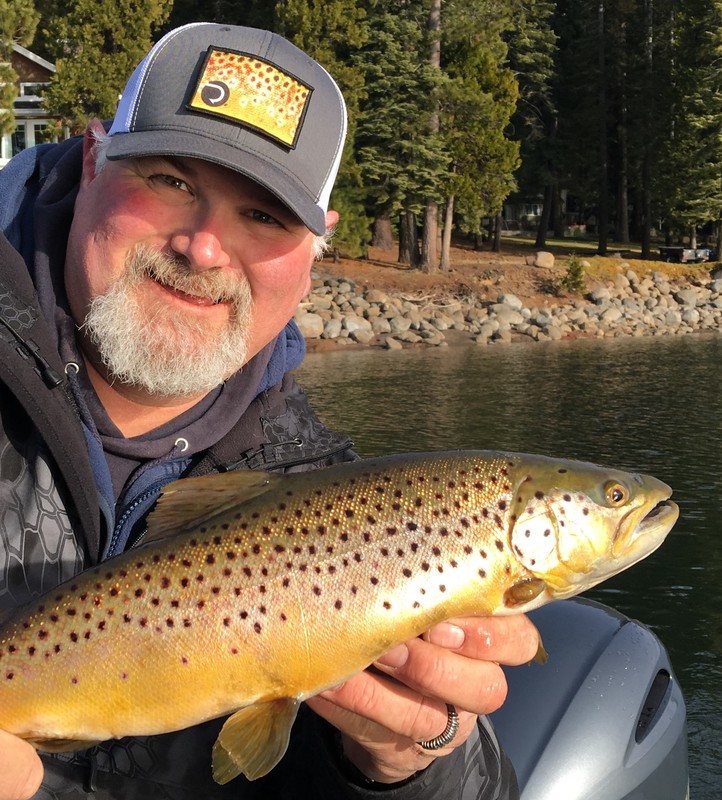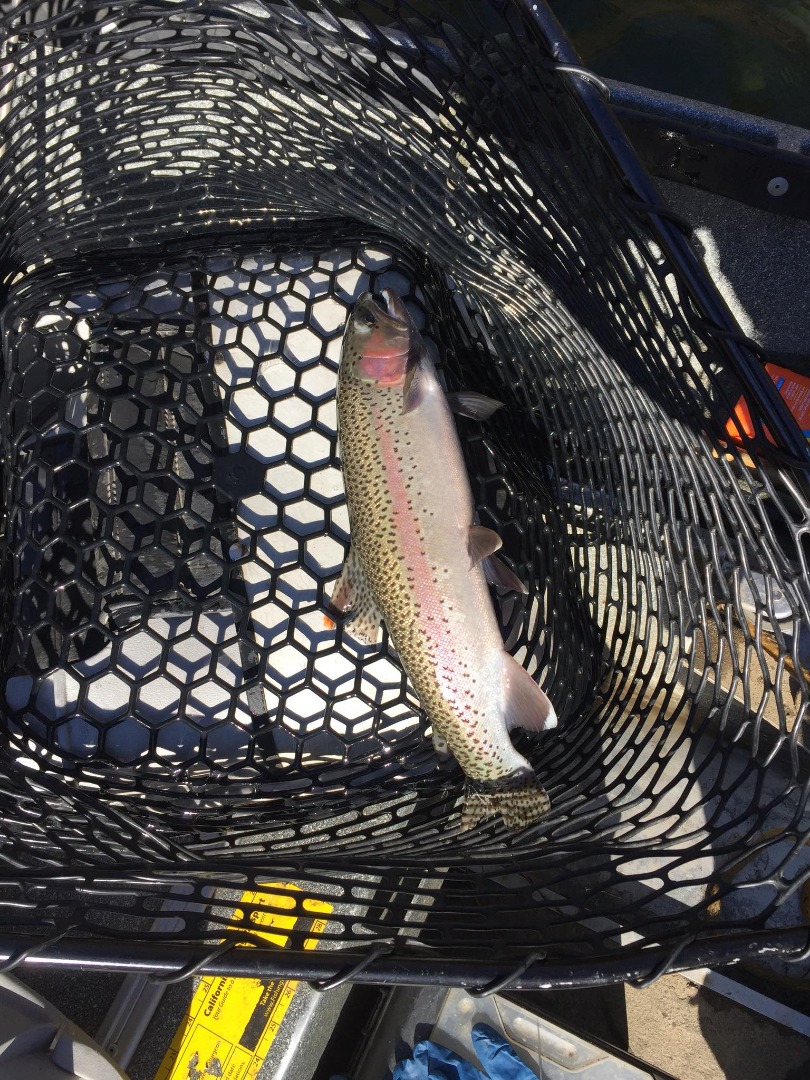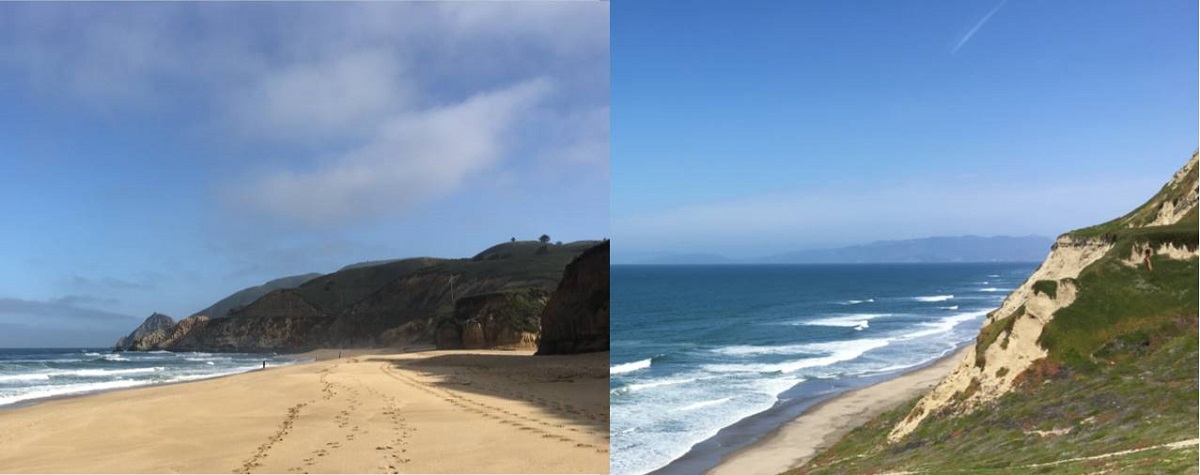Fishing Basics: Trout

by Gary Heffley
4-9-2018
Website
Trout are some of the most popular fish for anglers to target within the state and are especially popular for North State freshwater anglers. Trout are found in many lakes, rivers and streams throughout the region. Rainbow trout are the most widely distributed trout in California and include many native subspecies. Steelhead are an anadromous subspecies, spending time in ocean waters before returning to freshwater streams to spawn and then return to the ocean. Fishing for steelhead can be very specialized and is a subject for separate discussion.
There are other non-native trout species that have taken a foothold through numerous stocking programs over time. Brown and brook trout have been introduced into many waters and, in some cases, have established a naturally reproducing population. There are also fish-able populations of native and introduced cutthroat trout, as well as lake trout (mackinaw) in some North State waters. The CDFW offers a couple of free publications that outline all the trout and subspecies found in the state and are great references for not only trout, but all fishes in the state, both fresh and saltwater. The California Fishing Passport and the California Finfish and Shellfish Identification Book are available at most CDFW offices. The California trout fishery is one of the most studied, regulated and managed fisheries in the state. The other publication to always have in possession is the current fishing regulations. Always check the Fish and Wildlife regulations for open season dates and closures, as well as any other tackle or creel restrictions, before fishing any waters in the state.
There is a very active state sponsored stocking program of hatchery reared trout for many lakes and streams in the state to support the angling public. In some areas, privately raised trout are released to complement native or state provided stocking programs. These waters are managed as a “put and take” fishery, where trout are frequently replenished to offset numbers removed by anglers. There are also numerous waters that are managed as “Wild Trout” waters and have only naturally reproducing populations. These waters are managed by strong regulations often allowing for zero limit, catch and release only angling with special tackle restrictions. The catch and release practice is favored by many trout anglers who enjoy the sport of catching trout, especially those using fly fishing techniques.
There are many techniques applied by anglers to catch trout. The gear used can vary from simple bait fishing set-ups for bank anglers, high tech downrigger trolling from boats, to finesse fly fishing from wading anglers or drift boats. There are lures, flies, and tackle to meet most any technique demands and applications an angler chooses.
Bank anglers often apply simple bait fishing techniques for both stream and lake fishing, while others often cast and retrieve a variety of lures. Suspending bait under a bobber or using a sliding sinker set up with floating baits such as doughbaits, marshmallows or inflated nightcrawlers off the bottom, are the most common plan of attack. Popular suspending baits are nightcrawlers, red worms, mealworms, crickets, and where allowed, live minnows. Many anglers like to use grasshoppers, crickets and hellgrammites collected right next to the shore.
Tossing and retrieving spoons, spinners and small crankbaits can be very effective in lake or stream applications. Many will use spinning tackle to toss and very slowly retrieve (when you think your retrieve is slow enough...slow down from there) a small woolly bugger fly or other small fly behind a floating water or torpedo bobber for success in “stillwater” locations. “Stillwater” is defined as bodies of water, commonly lakes or ponds, where there is little or no current. Another popular bank technique is to “bounce” a nightcrawler along the bottom of a stream or river, the easiest set up being a baited hook with a small split shot about a foot above the hook to hold the bait just off the bottom. Cast upstream at a 45 degree angle and allow the bait to bounce downstream. Keep a fairly tight line throughout the drift to prevent snagging the bottom and to detect strikes. Repeat the process when the bait reaches the bottom of the drift.
Trolling is a very popular method for anglers using a boat to target trout. Some trolling can be fairly easy, especially in late fall, winter, and early spring when trout can be found in the upper water columns of big lakes and reservoirs. But as the hot weather arrives and water temperatures increase in the late spring, summer, and early fall months, these same trout tend to be found in deeper, cooler, and oxygenated water columns and can only be reached by anglers employing deep water, controlled depth techniques. The use of fish locating electronics coupled with downriggers, lead-core fishing line or other “divers” are needed to be successful. Those unable to get the baits down to the trout often leave frustrated thinking that the trout they caught earlier in the year have just disappeared, when in fact, they just went deeper in search of cooler water. While proper depth controlled trolling techniques is subject for other articles, here are a few basic recommendations for trolling in the winter and early spring when trout are near the surface.
First, troll as slow as you can, while insuring your lure is working properly. Different lures are designed for use at different speeds, and to check to see if the speed is correct, set the lure just behind the boat at a speed, where you can watch the “action” of the lure. It will be easy to tell, both by the lure, and the rod tip action, if the lure is tracking properly with the speed of the boat. Many lures work best trolled around just a couple of miles an hour. The other recommendation is to set the lure back at least 150 feet behind the boat and to never troll in a straight line; use slow S turns. Occasionally pumping the rod will also apply a pulsing pattern, as trout can be enticed to strike if they feel the bait is trying to escape (on the rise of the tip) or if the bait appears injured and falling back (the lowering of the tip). Spoons and crankbaits are popular for this technique, and for those who troll along the contour of the shoreline, bass and crappie are often bonus catches. Some of my personal favorite lures for this time of year are Rapala Shad Raps, Countdown or Floating minnow baits, Mack's Shasta Tackle Cripplures, as well as Kastmasters, Daredevles, Speedie Shiners, Needlefish and Z-Rays. There are a number of trolling flies that can be very effective for anglers using this technique. Jay Fair trolling flies and Arctic Flies are popular on a number of lakes. As most flies have little natural action, use of an action disc ahead of the fly, a small attractor blade or constant pumping of the rod will also enhance the fly's action to attract a strike. Of course, many anglers like to troll a threaded nightcrawler behind an attractor blade or series of small blades for success. If you ever ask a trout angler what he is using and he hollers back, “garden tackle,” you'll know he is putting the tried and true nightcrawler to work.
The other basic technique for targeting trout is fly fishing, and contrary to the perception of the sport, its basis is a very simple concept. Yes, there is aura around the sport, a somewhat elite status around the whole fly industry, but all fly fishing is, is placing an artificial fly in front of a trout to entice a strike.
An angler can get started for a couple hundred dollars for a decent quality fly rod/reel combo, pre-spooled, with matching weighted fly line and leader. For many, a 9' 5 or 6 weight rod, matching reel and line will satisfy most demands for getting started on north state waters. Add a handful of flies, basic accessories and some basic casting instructions, and anyone can give it a try. A local fly fishing club is a great place to learn basics, as many offer instructions on casting, reading water, fly selection and even tying flies. Hiring a guide is a great way to learn specific waters and techniques. It can also greatly enhance a new angler's learning curve by getting the positive reinforcement of catching fish.
Some of the best waters for an angler to get a feel for fly fishing is right here in the North State, providing they utilize one of the many guides who ply the Sacramento River in the Redding area. According to many, the Sacramento River in Redding ranks as one of the best tail-race (water flow controlled by a dam upstream) rainbow trout fisheries in the nation, if not the world. And the rainbows here are hearty wild natives, as there are not any hatchery plants in the area. Most guides employ a multiple fly under an indicator technique, and after a brief on-the-water casting lesson and instruction on maintaining a proper drift presentation, you will be fishing. Catching can take a bit of tsaime as there is a learning curve in responding to a strike, but chances will almost always present themselves to hook trout, even on the first trip. Anglers take many of the basic lessons learned on the Sac and employ them on other waters.
For those looking to try out trout fishing, some of the best large lakes in the North State are, Shasta, Trinity, and Lake Almanor, which are open to angling year round. Eagle Lake has a limited angling season of Memorial Day weekend to the end of the year, and is a very popular rainbow trout fishery. In fact, the Eagle Lake Rainbow is its own sub-species and is known as a hearty hard fighting fish. Smaller lakes, like Lewiston and Baum, provide great access and catching opportunities, in fact, most lakes in the Northern Sierras, Intermountain or Cascade regions will offer trout opportunities. It should be noted that in recent years some backcountry lakes have fallen off stocking programs. These waters had the hatchery stocking stopped for the protection of endangered amphibians.
It should also be noted that the National Park service ceased stocking trout in Lassen National Park many years ago as trout were not native to the waters in the park. While there may be a few naturally reproducing trout in some of the creeks, with the exception of Manzanita Lake which has a strong population of reproducing brown and rainbow trout and is strictly regulated, the lakes in the park are devoid of trout. But for those park visitors interested in fishing, trout fishing opportunities abound within easy driving distance of the park boundaries.
There are popular world class stream trout fishing waters in the North State with the Upper Sacramento River above Shasta Lake, McCloud River, Pit River, Fall River and the Wild Trout section of Hat Creek drawing fly anglers from around the country. For spinning tackle anglers, other waters like Deer Creek and the Upper and Middle sections of Hat Creek are supported with strong stocking programs providing for excellent catch rates throughout the General Trout Season. Oftentimes, trout are stocked twice a week during the summer months to support visiting anglers.
Trout fishing is a great family activity, and there are often opportunities in the spring for youth to be introduced to the sport by taking part in many of the free kids fishing events held throughout the region. Trout fishing is also a great way to explore the outdoors. It has often been quoted that, “trout don't live in ugly places.” I spend a lot of time trout fishing on waters with Mt. Shasta, Mt. Lassen or the Trinity Alps as a backdrop...as they say, it does not get much better than that.
Gary Heffley has been a valued contributor to MyOutdoorBuddy for over 10 years serving as manager, sales representative and reporter for much of Northern California. He is an avid outdoorsman and loves to fish and write about his adventures. He has a long history in the Sporting Goods field and uses that extensive experience to impart his wisdom in his writing.



